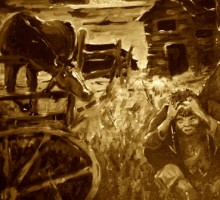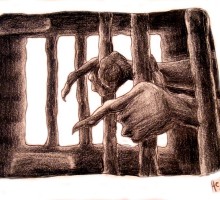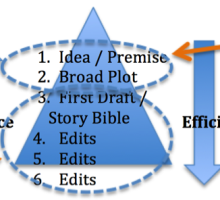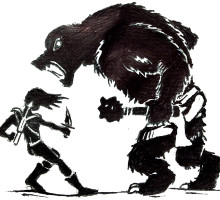I have been working on my latest manuscript fairly hard over the last two years and been a bit quieter on the posting side, but that hasn’t stopped me from thinking about craft. In fact, I’ve been inundating myself with it as I edit, like a sponge in a soapy sink (yes, I’ve been doing dishes too).
Now that I’m done the manuscript, I’m hoping to put some of those craft thoughts here, although as readers are aware, my life is a bit of a whirlwind these days, with a demanding job, kids, and a desire to actually finish stories on a regular basis.
So back to craft, what do I mean about the forest, the trees, and grooming the path?
There are different skills in writing. It is not a simple craft, although the accomplished make it seem so, and sometimes it is helpful to be reminded that you don’t just need to master one piece of it. Think of yourself as an owner of a nature park in an uncharted area (owner of an idea that you want to write in some cool genre), but at the moment it is just a tangled mess that would require a parachute to visit (like my kids’ rooms. I mean, a vague story idea). No one is going to drive two hours to see your plot of land, much less pay money for it (buy your book).
So where do you start? You have to get a sense of what you want to show your audience. Do you have a vision of a certain hillside shoulder giving a ten-mile view with an amazing pine-scented breeze, or a cool bubbling creek with smooth onyx rocks that people could dip their toes into? Well okay, you have a couple of cool points on your trail that you can work towards, but also require some investment of time (clearing trees to get up the hill, building a neat pine bridge over the stream). These are events along your story and you can sit down with a pencil and paper and map that out somewhat early. Not to say there won’t be unexpected problems in clearing the path or unexpected magical corners of the woods that will call for detours later. But you can plan the length of the trail and how hard you want the climb to be, and even what subtle signage you might plant along the way (manuscript length, genre, and themes).
These are all things that require time and thought, and writers get better at them over time. But what I wanted to touch on today was the grooming of the trail.
I feel like I spent more time grooming the trail on this last manuscript. And this is an interesting decision to make because it is the most laborious and time-consuming of the steps. You can hack your way through the woods with a chainsaw or you can dig out the stumps, set gravel down in spongy spots, and lay smooth cedar boards on top. Cut back roots that could trip the walker and smooth the rail of the bridge to avoid splinters. These things remove the annoyances that could take your nature trail from getting a four or five-star review to a two or three (or one, if that splinter really stung).
But here is the analogy with a book. It takes confidence to want to groom the trail. To read the words aloud, pick the better verb, avoid clunky repetition, and ensure clarity. If you are a beginner at laying trails and you put the path in the wrong spot, or your view overlooks a four-lane highway with smog that burns your hiker’s eyes, no one is going to care anyway. No one will get past the query pitch. It’s tempting to want to do it AFTER you see how people like the trail. But sadly, that isn’t the road to success.
The experienced trail layers worry less about this. They’ve got the five-star ratings, they know how it works, and are sure the effort will pay off.
I put a chapter of my recently completed manuscript on the Online Writer’s Workshop last year. I was thrilled to get an “Editor’s Choice” from Judith Tarr. Definitely made my week. But I found the accompanying review (or at least how I absorbed it) to be very interesting. It boiled down to ‘interesting story, intriguing premise, but make sure you pay attention to word choice and construction’. In other words, I had an interesting beginning to my nature walk, with a cool view and a nice breeze, but I’d left a root that tripped her and some mud splashed her ankle, things that could be cleaned up.
So in this manuscript, including my edited first chapter, I’ve spent more time on this and hopefully improved it.
The path has been swept. The view is revealed. Hopefully, the hikers enjoy.




